Estimated reading time: 6 minutes
Following on from from our previous posts on SQL, this post will help to explain how to use wildcards in your query.
What would you use a wild card in the first place?
When a data analyst dealing with a large dataset, it is most likely that they will not know every piece of data.
As a result data will come from multiple sources and will be in different formats.
In some instances when you select rows using certain values using SQL, this will work as you know the exact values.
Using SQL wild cards will aid the programmer in being able to get specific pieces of data that may cause data quality errors, but they may not know where the problem is, or what makes up the error.
So lets look at a data set and start to apply some of the logic above , to a practical example.
We are going to use SLlite again, below is the table we are going to run our query off.
As you will see we have three columns with data in it, the examples below will work off the “name” column.

Name has a number of data points that are quite similar, so lets start showing you how to actually use the wild card.
Filter the data for all values before the last value using %l
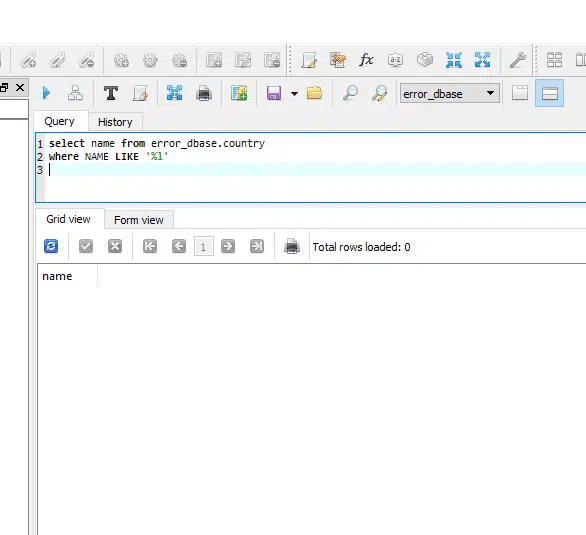
The output below is basically going to the name column only and asking it to return values , that have “l” at the end.
What the SQL is instructed to do is to look at each string, and where there is an “l” at the end, and characters before it, then return those records.
This is what using wildcards does, the % basically is saying give me any value before “l”, which has to be at the end.
As none of the values have “l” at the end it returns blank, which is correct.
If we rerun this , with %y, we get four values returned:
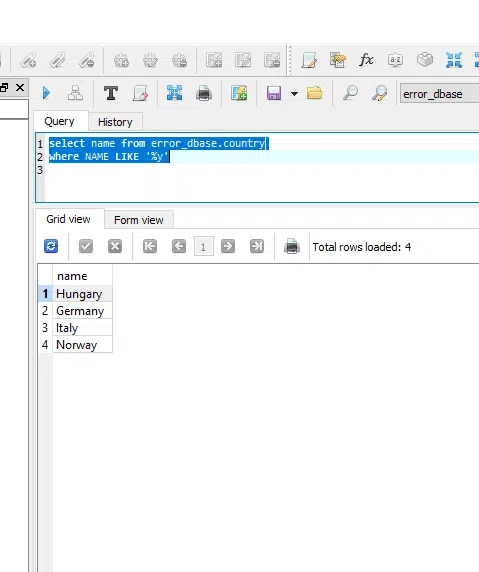
Filter the data for all values that start with A%
As a follow on from above say you want to find records that begin with A, but you don’t know what comes after the “A”?
Below, correctly it returns only three, and it is not concerned what comes afterwards.
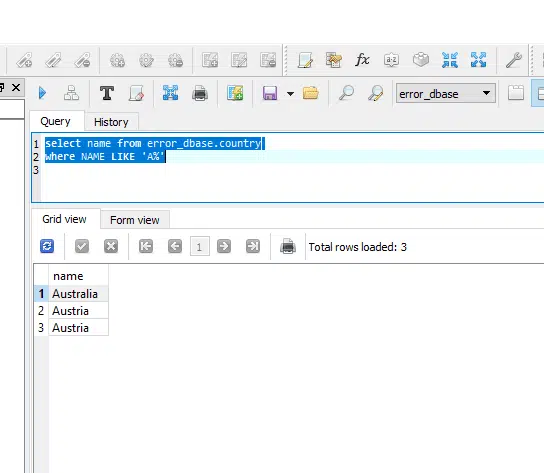
Filter the data for all values where a “g” is in the middle?
In the above we looked at the start and end points of the string, and it return records that matched the criteria.
There maybe a scenario where you want to look for records, with a particular value that may be in the middle of the string.
In this example, we know that “g” occurs at the fourth position, so it will return all records where g is in that position, regardless of what is on either side.
In applying %%% it is basically saying return anything, if the fourth character which is g, irrespective of what is in the previous three characters.
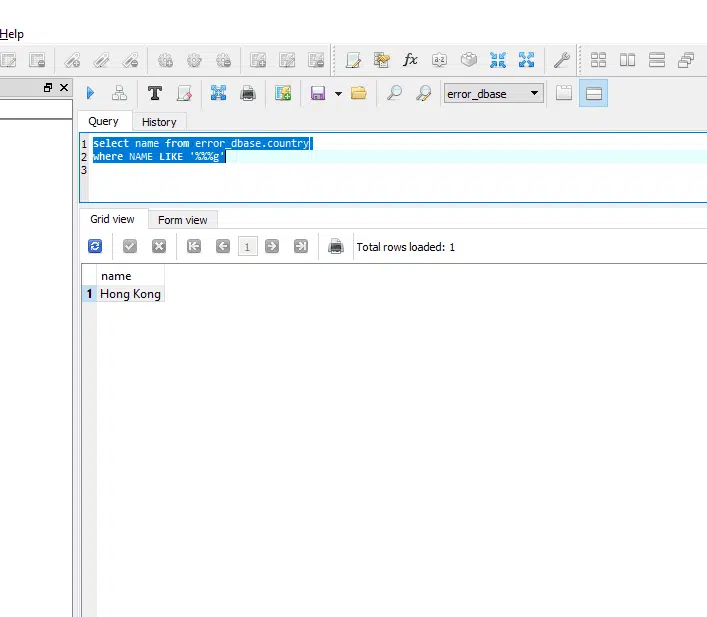
Filter the data for all values where there is a space in the record
There are going to be records that have spaces in them, and sometimes that may or may not be wanted.
In order to find those records, we would apply the below wildcard in the SQL
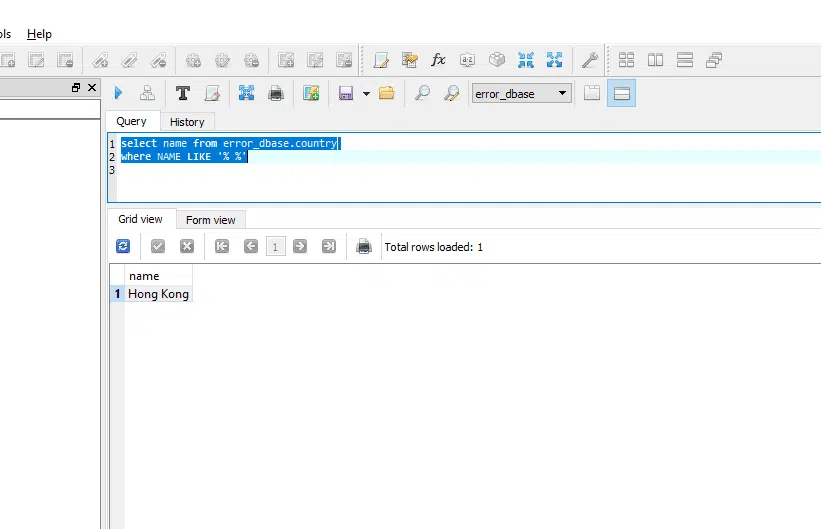
Filter the data for all values start with an “H” and end with a “y”
In a dataset, you may want to find records that begin and end with specific values, but you are not sure or bothered what is in between.
Below we have changed the “%” for “_” in the query. This change allows us to ask for a start and end character.
Something to note, between the “H” and “y” there are five underscores (_) in there. Each one represents the no of values between the first and last character. If the string was only three letters long, then you would use one _ and so on.
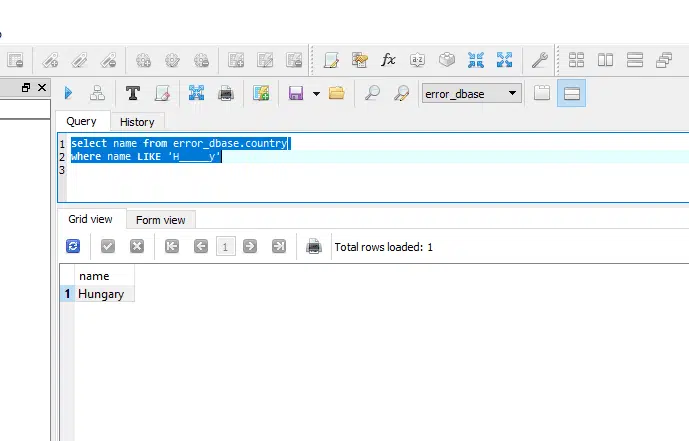
Summary and conlusion
In this post, we have described what a wild card is and its uses. They are very handy for searching for a combination of value or values when you are not sure what else is in the string.
This is quite commonly used in pattern searching, and in data cleansing , most systems would incorporate it especially if automating tasks , it allows clean data to process without it coming to a stand still.
On our YouTube channel you can subscribe to find out more information about data cleansing, SQL and lots of different tips and techniques, below is the video for this post:
A list of wild card operators are as follows:
| Wild card | Description |
| % | Either before or after a character, represents any character that could appear but is unknown. |
| _ | This is a single character of any value that may appear in a wildcard search, represents a space between characters. |
| ^ | Inside brackets beside characters, tells the program to not return those characters. |
| – | Inside a bracket and between characters, represents the range to be found of the characters it is in between. |
| [] | If you place characters inside this bracket, it requests the program to return any of those characters in the output. |
We have lots of posts on this website that will help you build your data analytics skills.
